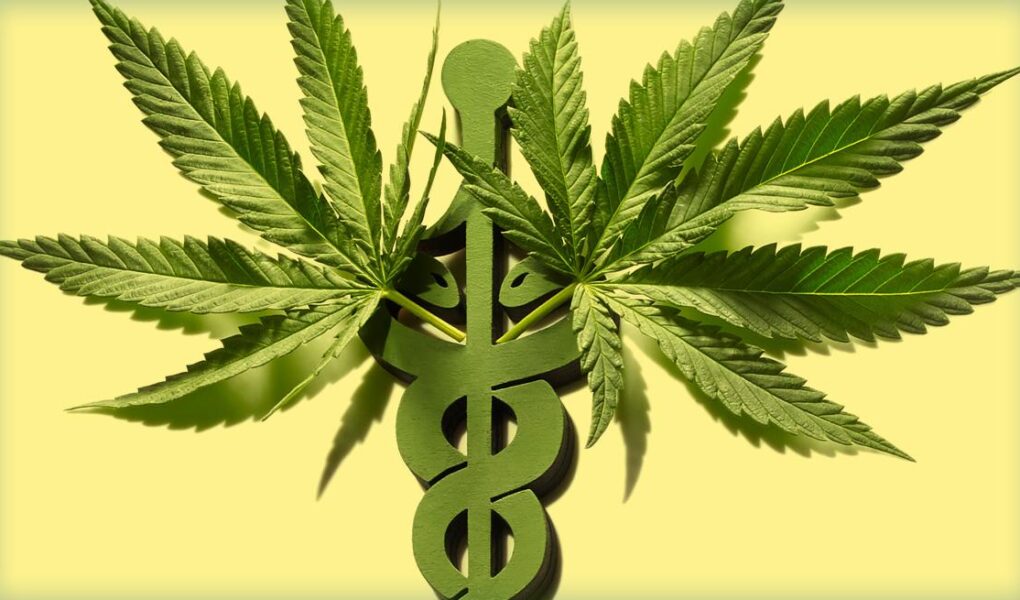As the conversation around marijuana shifts from the shadows of stigma to the spotlight of scientific inquiry, a new era in medicine is unfolding. Once relegated to the realm of recreational use, cannabis is now emerging as a compelling contender in the treatment of various medical conditions. With the increasing legalization and a growing body of research, the potential therapeutic benefits of marijuana are being explored with an open mind and rigorous scrutiny. This article delves into the multifaceted landscape of medical marijuana, examining its historical context, scientific advancements, and the diverse ailments it may help alleviate. Join us as we navigate the complex intersection of tradition, innovation, and medicine in the evolving narrative of this remarkable plant.
Table of Contents
- Exploring the Therapeutic Potential of Cannabis in Pain Management
- Understanding Cannabinoids: Mechanisms and Medical Applications
- Navigating Legal Considerations for Prescription Marijuana Use
- Guidelines for Patients: How to Safely Integrate Medical Marijuana into Treatment Plans
- Q&A
- Insights and Conclusions
Exploring the Therapeutic Potential of Cannabis in Pain Management
The growing interest in cannabis as a therapeutic agent has prompted researchers and healthcare professionals to delve deeper into its efficacy in alleviating pain. Numerous studies suggest that compounds found in marijuana, particularly cannabinoids like THC and CBD, interact with the body’s endocannabinoid system to modulate pain sensation. By binding to cannabinoid receptors, these substances can potentially reduce inflammation and provide relief from various types of pain, including chronic, neuropathic, and inflammatory discomfort. The versatility of cannabis is underscored by its capacity to address pain associated with conditions such as arthritis, multiple sclerosis, and even post-surgical recovery.
As patient experiences and anecdotal evidence continue to surface, there is a growing body of clinical trials that support the use of cannabis in pain management. These trials have highlighted several benefits, including:
- Reduced reliance on opioids: Many patients report that cannabis helps them lower opioid intake, potentially minimizing the risks associated with opioid addiction.
- Improved quality of life: Users have noted enhancements in daily functioning and well-being, contributing to a more positive outlook.
- Fewer side effects: Compared to traditional pain medications, cannabis may offer a more tolerable side effect profile for some users.
| Type of Pain | Cannabis Efficacy |
|---|---|
| Chronic Pain | Effective |
| Neuropathic Pain | High efficacy |
| Post-surgical Pain | Moderate effectiveness |
| Arthritis Pain | Promising results |
Understanding Cannabinoids: Mechanisms and Medical Applications
The fascinating world of cannabinoids reveals intricate mechanisms that contribute to their therapeutic effects. Cannabinoids, compounds found in the cannabis plant, interact with the body’s endocannabinoid system (ECS), which plays a crucial role in maintaining homeostasis. This interaction occurs primarily through two types of receptors: CB1 and CB2. CB1 receptors, predominantly located in the brain, influence mood, pain perception, and memory, while CB2 receptors, found in the immune system, are associated with inflammation and immune response. By modulating these receptors, cannabinoids can help alleviate various medical conditions, promoting a balance within the body.
Exploring the medical applications of cannabinoids uncovers a broad spectrum of potential benefits. Some of the well-documented uses include:
- Chronic Pain Relief: Cannabinoids like THC have anti-inflammatory properties, making them effective analgesics.
- Reduction of Nausea: Cannabinoids can help manage nausea and vomiting, particularly in chemotherapy patients.
- Appetite Stimulation: THC is known to enhance appetite, which is beneficial for individuals with conditions like HIV/AIDS.
- Anxiety and Stress Management: Certain cannabinoids exhibit anxiolytic effects, assisting in the management of anxiety disorders.
| Condition | Cannabinoid | Primary Benefit |
|---|---|---|
| Chronic Pain | THC | Pain Relief |
| Nausea | CBD, THC | Reduction of Nausea |
| Loss of Appetite | THC | Stimulation of Appetite |
| Anxiety | CBD | Anxiety Reduction |
Navigating Legal Considerations for Prescription Marijuana Use
Navigating the landscape of prescription marijuana use involves understanding the varied legal frameworks that can affect both availability and access. State laws can differ significantly; therefore, individuals seeking medical marijuana should familiarize themselves with local statutes. In particular, patients may need to consider factors such as:
- Eligibility criteria: What conditions are recognized for medical use?
- Doctor recommendations: Is a specific type of doctor required to prescribe marijuana?
- Dispensary regulations: Are there licensed dispensaries available in your area?
The federal landscape adds another layer of complexity, as marijuana remains classified as a Schedule I substance under the Controlled Substances Act. This creates a unique challenge for those who rely on it for treatment but must also navigate the implications of legality in workplaces and public spaces. Patients must be aware of:
- Employment policies: How might using prescribed marijuana affect job security?
- Legal protections: Are there laws in place to protect patients from discrimination?
- Interstate travel: What are the protections when traveling across state lines?
Understanding these factors can empower patients to make informed decisions about their medical marijuana use while minimizing legal risks. A clear grasp of state-specific laws and the potential repercussions at the federal level is critical for ensuring a responsible approach to treatment.
Guidelines for Patients: How to Safely Integrate Medical Marijuana into Treatment Plans
Integrating medical marijuana into your treatment plan requires a thoughtful approach. Consultation with healthcare professionals is paramount; ensure you’re guided by someone knowledgeable about cannabis therapeutics. They can help evaluate your condition, recommend appropriate strains, and determine safe dosages. Stay informed about local laws and regulations regarding medical marijuana use, as compliance is essential for safe usage. Understanding the distinction between various forms of consumption, such as oils, edibles, and flower, can also help tailor your approach to meet your specific health needs.
When beginning your medical marijuana journey, consider adopting a patient log to monitor your experiences. Documenting your doses, methods of consumption, and any side effects can provide valuable insights for both you and your healthcare provider. Practicing gradual introduction is key; start with small doses and assess your body’s responses before increasing. It’s also important to establish a safe environment, free from stressors, to evaluate the effects effectively. By taking these measures, you can ensure that your experience with medical marijuana is both safe and beneficial.
Q&A
Title: Exploring the Medical Use of Marijuana: Questions and Answers
Q1: What is the primary reason for using marijuana in a medical context?
A: Marijuana is primarily used in a medical context for its therapeutic properties. It contains compounds known as cannabinoids, which interact with the body’s endocannabinoid system to alleviate symptoms associated with various conditions, such as chronic pain, anxiety, nausea, and muscle spasticity.
Q2: How does medical marijuana differ from recreational use?
A: Medical marijuana is prescribed by professionals and tailored to treat specific health conditions. It often involves particular strains or formulations to maximize therapeutic benefits. In contrast, recreational use focuses on the psychoactive effects and is not necessarily intended for health improvement.
Q3: What conditions are commonly treated with medical marijuana?
A: Medical marijuana is commonly prescribed for a variety of conditions, including but not limited to chronic pain, glaucoma, epilepsy, multiple sclerosis, cancer-related symptoms, and PTSD. Each patient’s eligibility is assessed individually, considering their unique health circumstances.
Q4: Are there any risks associated with medical marijuana use?
A: Yes, like any medication, medical marijuana can have side effects. Potential risks include dizziness, changes in mood, cognitive impairment, and dependence in some individuals. It is crucial for patients to discuss these risks with their healthcare provider to ensure safe use.
Q5: Can anyone obtain a prescription for medical marijuana?
A: Not everyone can obtain a prescription for medical marijuana; eligibility varies by state or country. Patients typically need to undergo an evaluation by a licensed medical professional who can determine if their condition qualifies for treatment with marijuana.
Q6: How is medical marijuana typically administered?
A: Medical marijuana can be administered in various ways, including smoking, vaping, edibles, oils, and topical applications. The method of administration often depends on the patient’s preference, condition being treated, and the desired onset of effects.
Q7: What is the legal status of medical marijuana?
A: The legal status of medical marijuana varies widely across the globe. In some regions, it is fully legal, while in others, it may be available only under strict regulations or not at all. Patients need to be informed about their local laws and regulations regarding medical marijuana use.
Q8: How can patients ensure they are using medical marijuana safely?
A: Patients should consult with healthcare providers who are knowledgeable about medical marijuana, educate themselves about dosing, and only obtain cannabis products from licensed dispensaries. Regular follow-ups with their doctor can help monitor effectiveness and adjust treatment as necessary.
Q9: Is there scientific research supporting the effectiveness of medical marijuana?
A: Yes, there is a growing body of scientific research supporting the effectiveness of medical marijuana for certain conditions. Clinical studies have shown promising results, particularly for chronic pain and certain neurological disorders. However, more research is needed to fully understand all its benefits and risks.
Q10: What does the future hold for medical marijuana?
A: The future of medical marijuana looks promising, with ongoing research and a trend towards legalization in many parts of the world. As understanding of its therapeutic benefits expands, it is likely to become an increasingly accepted component of medical treatment protocols, provided that regulations and safety standards evolve accordingly.
Insights and Conclusions
As the sun sets on the horizon of medical innovations, the narrative around marijuana continues to evolve, blending ancient practices with modern science. The journey of cannabis in healthcare reflects a broader story of resilience, hope, and the unyielding pursuit of relief for millions. While research advances and legislation shifts, it’s imperative to remain informed and open-minded about this multifaceted plant. As we close this exploration, it’s clear that the conversation surrounding medical marijuana is just beginning, inviting us to witness how it reshapes the landscape of healing. As we look forward, let us approach with curiosity and compassion, considering the potential to change lives—one patient at a time.


